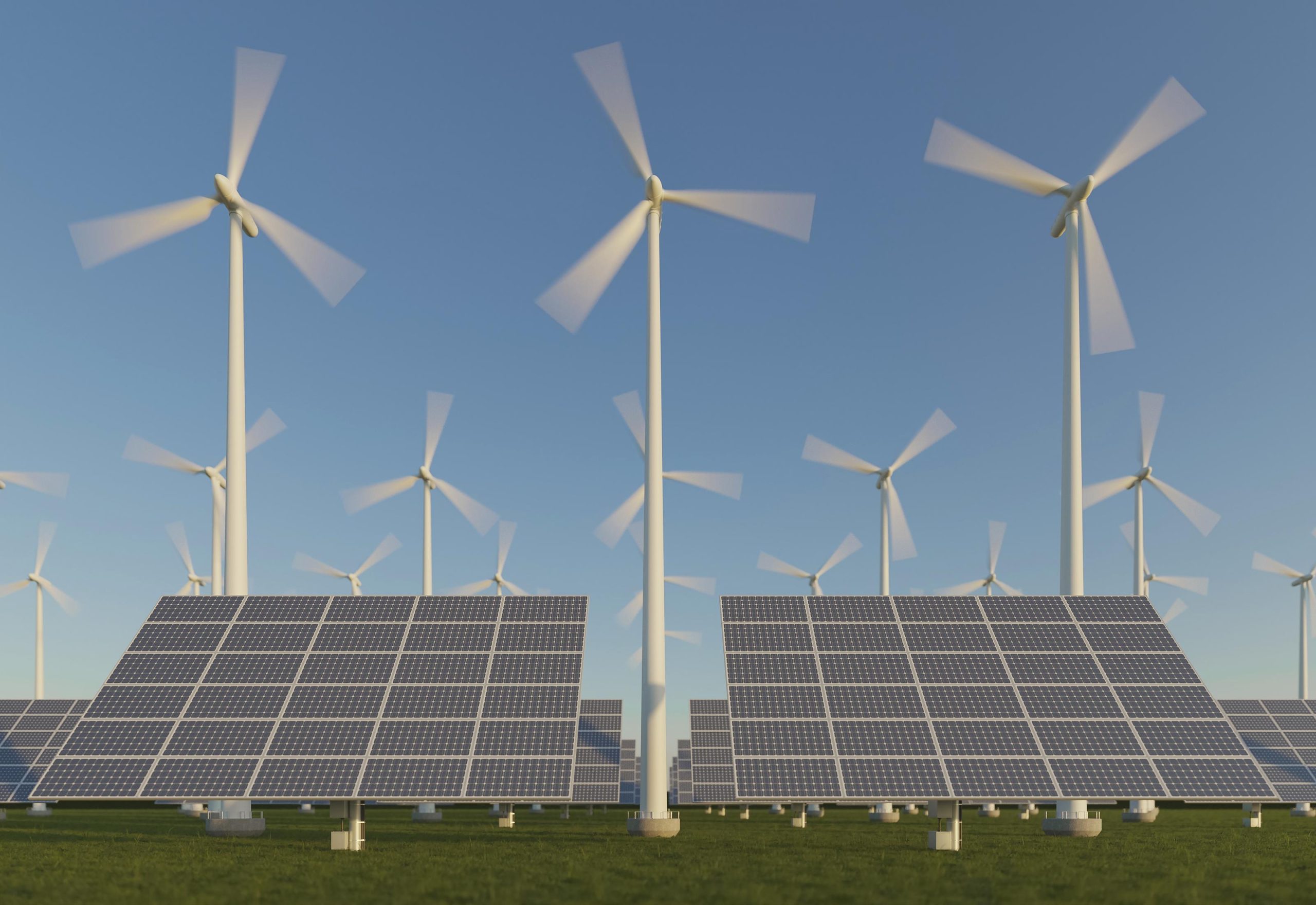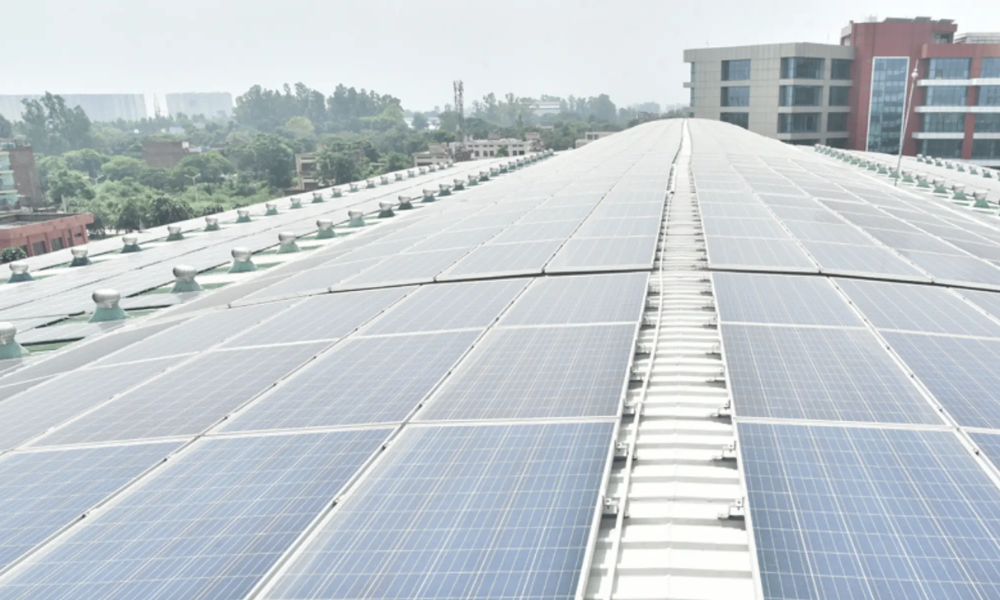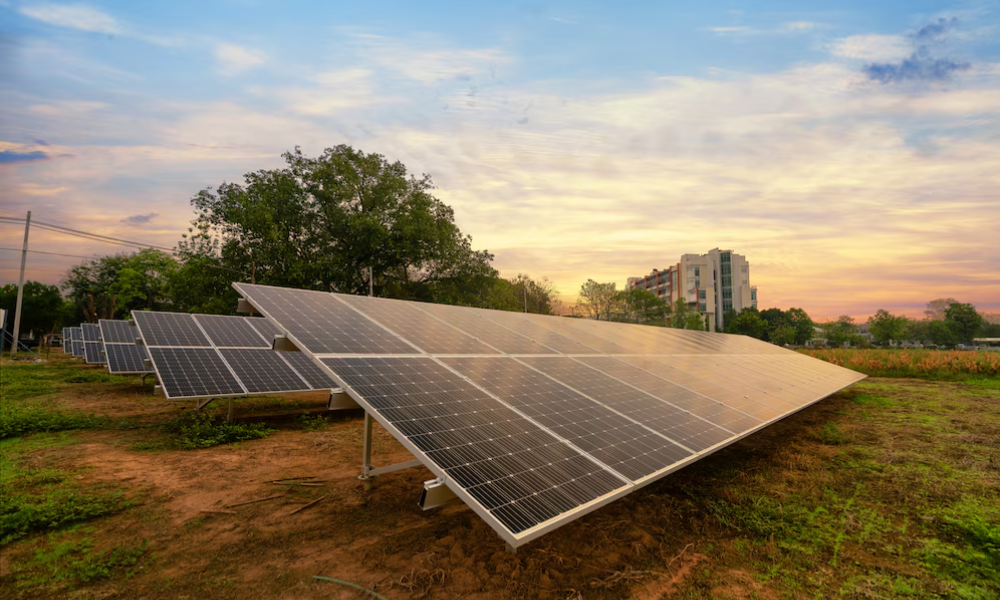In India’s vast area, sunlight graces the land abundantly. The journey towards harnessing solar power has been nothing short of remarkable. From humble beginnings to surpassing the milestone of 7 GW in power generation, the story of India’s solar energy journey is one of determination, innovation, and commitment to a sustainable future.
2012: Inception of the Solar Journey
In 2012, India took its first bold step towards harnessing solar power on a large scale. The launch of the first major solar engineering, procurement, and construction (EPC) project in the desert state of Rajasthan marked the beginning of an ambitious journey.
Rajasthan is a vast expanse of sun-soaked land. It was the perfect canvas for this endeavor. This project was not just about generating electricity. It was about laying the foundation for a solar revolution that would transform India’s energy landscape.
The significance of this project cannot be overstated. It demonstrated India’s commitment to leveraging its abundant solar potential to meet its growing energy needs. Moreover, it showcased the viability of solar power as a reliable and sustainable alternative to traditional energy sources.
With each ray of sunlight captured and converted into electricity, India moved one step closer to energy independence and environmental stewardship.
2013: Expansion and Branding
Inspired by the success of the inaugural project, India embarked on a journey of expansion and branding in 2013. The introduction of HARTEK-branded panels marked a significant milestone in the country’s solar journey. These panels were not just symbols of quality. They represented a commitment to local manufacturing and job creation.
By promoting homemade solar technology, India aimed to strengthen its domestic industry while reducing dependence on imports. Projects were initiated across the agricultural heartlands of Punjab and Haryana. Here, solar power offers a sustainable alternative to traditional energy sources.
Farmers, once reliant on an unstable power supply, now had access to clean and reliable electricity. This empowered them to irrigate their fields and enhance agricultural productivity. This expansion not only illuminated homes but also brightened the prospects of rural livelihoods.
2014-2015: Scaling New Heights
As India’s solar journey gained momentum, strategic expansion became imperative. In 2014, the solar footprint extended into South India with projects in Karnataka and Andhra Pradesh. This geographical diversification underscored the inclusive nature of India’s solar mission, which reached communities far and wide.
From the lush green landscapes of Karnataka to the coastal plains of Andhra Pradesh, solar panels adorned rooftops. They powered both homes and businesses alike.
The year 2015 witnessed a milestone moment with the completion of India’s largest steel plant project in Madhya Pradesh. This project showcased the versatility of solar energy applications across industries.
From powering heavy machinery to lighting up office spaces, solar power became an integral part of industrial operations. It reduced operational costs. It also reduced the environmental impact of traditional energy sources. This paves the way for a cleaner and greener future.
2016: Innovation and Recognition
Innovation has been the cornerstone of India’s solar energy journey. In 2016, the launch of Hartek Solar marked a significant milestone, setting a new benchmark in solar solutions. This regional initiative fostered technological advancements and promoted the nation’s self-reliance in renewable energy infrastructure.
“”The potential for innovation and positive change is limitless as the nation embraces cleaner and more sustainable energy sources. By developing smart grid technologies and promoting standardisation and interoperability, collaboration between governments and industries can drive the development of these standards as well.“
Source: government.economictimes.indiatimes.com
By promoting homegrown talent and expertise, India positioned itself as a global leader in solar innovation. The year also saw awards pouring in with the prestigious Smart Grid for Smart Cities award in Punjab. This recognition highlighted India’s pioneering efforts in revolutionizing urban energy solutions.
Smart grids powered by solar energy offered a glimpse into the future of sustainable urban development. Here, energy efficiency and environmental sustainability go hand in hand. As cities deal with the challenges of rapid urbanization, intelligent grids offer a ray of hope for a brighter and cleaner future.
2017: Commitment to Sustainability
As the world was dealing with the challenges of climate change, India reaffirmed its commitment to sustainability in 2017. Achieving 300 MW of solar grid connectivity across multiple states was a testament to this commitment. Solar power emerged as a powerful tool in reducing carbon emissions and mitigating the adverse effects of climate change.
From the snow-capped peaks of the Himalayas to the sun-kissed beaches of Kerala, solar panels became a common sight, powering homes, schools, hospitals, and industries.
The focus on renewable initiatives aims to meet energy demands while safeguarding the planet for future generations. As India marches towards a sustainable future, solar energy remains at the forefront of its efforts to combat climate change and promote environmental stewardship.
With each megawatt of solar power added to the grid, India takes a giant leap towards a greener, and more sustainable future.
2018: Consolidating Growth
As India’s solar journey continued to gather momentum, 2018 marked a year of significant milestones and consolidation. With over 1 GW of solar grid connectivity completed, the nation renewed its commitment to renewable energy transition. The Power System EPC business is a flagship of innovation and efficiency. They secured a prestigious 400 kV substation project from PGCIL, further establishing its position in the industry.
Meanwhile, Hartek Solar, the group’s solar arm, launched customized rooftop solar kits. This catered to the diverse needs of consumers across the country. This move not only enhanced accessibility to solar solutions but also showcased India’s excellence in customization and innovation in renewable energy technology.
Additionally, Hartek bagged its first gas-insulated (GIS) 132 KV project for AIIMS in Jhajjar, signaling a shift towards more advanced and efficient grid infrastructure.
The launch of Hartek Solar Van by the rooftop solar arm displayed the company’s commitment to innovation and customer service. This mobile initiative not only promoted awareness but also accelerated the adoption of rooftop solar among residential and commercial consumers.
2019: Scaling New Heights
In 2019, India’s solar ambitions reached new heights as the nation completed over 1.5 GW of solar grid connectivity. This remarkable feat underscored India’s rapid progress towards achieving its renewable energy targets and reducing its carbon footprint. The Hartek Group continued to make waves on the global stage.
The group’s Director – Simarpreet Singh earned a coveted spot on the Forbes 30 Under 30 Asia list, a testament to its leadership and vision in the renewable energy sector. Meanwhile, the group’s commitment to industry leadership was further strengthened with the appointment of its CMD as vice chairman of IEEMA (Indian Electrical and Electronics Manufacturers’ Association).
This prestigious position recognized the group’s contributions to the electrical industry and positioned it as a thought leader in shaping the future of energy infrastructure in India. Additionally, Hartek commissioned its first gas-insulated (GIS) 132 KV project, which showcased its expertise in smart grid technologies.
2020: Pioneering Partnerships
As India’s solar journey entered a new decade, 2020 marked a year of revolutionary partnerships and groundbreaking projects. The Hartek Group secured its first order of the NTPC 160MW solar power plant through TATA Power. This further reinforced its position as a key player in India’s renewable energy landscape.
This partnership not only expanded the group’s footprint in the solar sector but also contributed to India’s ambitious renewable energy targets. The Hartek Group’s Chairman (Hartek Singh) was appointed as the Chairman of IEEMA (Indian Electrical and Electronics Manufacturers’ Association), reaffirming the group’s leadership in the electrical industry.
This prestigious appointment provided a platform to drive policy advocacy and industry collaboration. This ensures the continued growth and sustainability of India’s energy sector. On the solar front, Hartek Solar executed Faridkot’s First Rooftop Solar plant at Dasmesh Dental College. Hartek Solar secured 1-MW rooftop solar projects in Daman & Diu. This expanded its presence in the distributed solar market and contributed to the region’s energy transition.
2021: Celebrating Milestones
In 2021, the Hartek Group celebrated three decades of trust and power. This marked a significant milestone in its journey towards excellence. This milestone reflected the group’s enduring commitment to quality and innovation. It also served as a testament to its strong partnerships and customer-centric approach.
Amidst the celebrations, the group was ranked among the 10 Most Promising EPC Contract Service Providers. This underscores its reputation as a trusted partner in delivering turnkey solutions across diverse sectors.
The installation of rooftop solar panels at the Golden Temple was a moment of pride for the nation. This iconic project showcased the group’s technical expertise and demonstrated its commitment to sustainability and heritage conservation.
2022: Expanding Horizons
In 2022, the Hartek Group continued its journey of expansion and innovation, achieving over 4 GW+ of solar grid connectivity. This milestone reinforced India’s position as a global leader in renewable energy adoption. It also set the stage for even more significant achievements in the years to come.
The group’s rooftop solar arm, Hartek Solar, was named the Solar EPC Company of the Year—Rooftop. This award highlights their excellence in delivering end-to-end solar solutions. Hartek Group’s collaboration with the German company RITTAL opened new avenues for technology transfer and collaboration, which drives further innovation and efficiency in India’s energy sector.
The group secured a significant order from PGCIL, bagging a 400kV project and further strengthening its presence in the transmission and distribution segment. Meanwhile, the group’s commitment to fostering a culture of excellence and employee engagement was recognized with its fourth consecutive certification as a Great Place to Work.
2023: Achieving New Heights
In 2023, India’s solar journey reached unparalleled heights as the nation completed 7 GW+ of solar grid connectivity. This solidified its position as a global leader in renewable energy adoption. This remarkable achievement showcased India’s commitment to sustainability. It also laid the foundation for a renewable future.
The Hartek Group’s rooftop solar arm, Hartek Solar, was named one of the Top 3 Rooftop Solar Installers in India, reaffirming its leadership in the distributed solar market. Moreover, the commissioning of a 400 KV PSTCL substation in Dhuri underscored the group’s expertise in transmission and distribution infrastructure.
Amidst these milestones, the group’s commitment to employee satisfaction and organizational excellence was recognized with its fourth consecutive certification as a Great Place to Work. This recognition highlighted the group’s dedication to fostering a culture of innovation, collaboration, and employee empowerment.
As India looks towards a future powered by renewable energy, the Hartek Group remains at the forefront of driving this transition. With each milestone achieved, the group brings India closer to realizing its vision of a cleaner, greener, and more sustainable future for generations to come.
Empowering the Future
The impact of India’s solar journey transcended geographical boundaries. This electrified diverse communities from the arid landscapes of Rajasthan to the coastal regions of Tamil Nadu. In rural areas, solar microgrids brought light to homes that had long remained in darkness. It empowers communities with access to affordable and renewable energy in India. In urban centres, solar rooftops adorned buildings, not just reducing electricity bills but also contributing to a cleaner environment.
As India strides towards a sustainable future, the journey does not end with achieving 7GW+ in solar power generation. The road ahead is paved with opportunities for continued innovation and expansion. Solar energy, coupled with intelligent grids, holds the key to meeting India’s growing energy needs efficiently and sustainably.
Additionally, the exploration of advanced energy storage solutions promises to address the irregularities associated with different renewable energy options, further bolstering India’s energy resilience.
Join Our Energy Movement
As we reflect on the remarkable journey of empowering India through solar energy, we invite you to join this transformative movement. Whether as policymakers, industry stakeholders, or concerned citizens, each one of us has a role to play in shaping India’s energy future. Let us harness the power of the sun to illuminate our homes and lead the path towards a greener, brighter tomorrow.
Conclusion
The journey to 7 GW+ in solar power generation is not merely a milestone. It is a witness to India’s unwavering commitment to sustainability and progress. As we celebrate this achievement, we look towards the future with optimism and determination.
With innovation as our compass and sustainability as our guiding principle, India marches forward towards a future powered by the sun. Here, energy is abundant, and accessible to all.
Frequently Asked Questions
1. How did India begin its large-scale solar energy journey?
India’s solar journey began in 2012 with its first major EPC project in Rajasthan, laying the foundation for large-scale renewable energy adoption.
2. What role has Hartek played in India’s solar expansion?
Hartek has contributed significantly, achieving over 7GW+ solar connectivity, leading rooftop solar projects, and advancing smart grid technology.
3. How has solar energy impacted rural and urban communities in India?
Solar microgrids have provided electricity to rural homes, while urban solar rooftops have lowered costs and reduced environmental impact.
4. What are the key innovations driving India’s solar growth?
Advancements like smart grids, energy storage, and customized rooftop solar solutions have accelerated India’s renewable energy transition.
5. What’s next for India’s solar energy sector?
India aims to expand beyond 7GW, integrating advanced storage solutions and intelligent grids to enhance energy efficiency and resilience.



